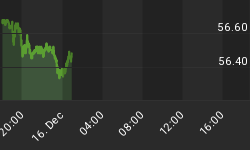This article was published for the benefit of subscribers on January 18th, 2009.
The short-term Elliott Wave count of the S&P 500 Index is shown below, with the preferred count shown in colour and the alternate count shown in grey. For the preferred count to be correct, wave [b] of a triangle MUST be forming at present, and follow through to wave [e] for completion to form wave XX before starting wave Z...this pattern represents a triple combination that would allow the broad stock markets to rise into mid March/early April 2009. The alternate count I mentioned on Friday was that a diametric triangle was forming, with wave G likely to go above the wave [e] of 940ish. The alternate count would last all of this coming week and into the next before falling off a cliff. Either pattern has an equal probability of forming, as suggested by all of the Fib and price measurements performed (most not shown). If the preferred count is correct, price action of the S&P should remain between 815 and 870 while market action rising above 875 suggests the alternate count is correct. Those long the S&P watch for resistance around 860-870, which would indicate a decline in wave [c] of a non-limiting triangle in wave XX.
Figure 1
![]() Larger Image
Larger Image
The mid-term Elliott Wave count of the S&P 500 Index is shown below, with the preferred count shown in colour and the alternate count shown in grey. As per the preferred count, there would be grinding stock market action to somewhere between 980-1000 before topping out around mid March/early April 2009. Whichever pattern forms as defined in the text accompanying Figure 1, wave (Y) of Intermediate Degree has yet to form, which will represent the final low for the present move down somewhere between 450-550...I put quite a spread in because the precise low will depend upon how bad things truly get. This sort of decline in the broad stock market indices will also create a drag with the gold stocks.
Figure 2
![]() Larger Image
Larger Image
The long-term Elliott Wave count of the S&P 500 Index is shown below, with the preferred and alternate counts denoted in colour and grey, respectively. Given the time wave b took to form and the chances wave c passes well beneath the 2002 lows, a possibility arises whereby wave d.(IV) rises for 12-18 months to somewhere between 800-900 (this will represent a near double of the wave c lows), followed by a decline in wave e which will end as a "higher low"to complete wave (IV) sometime between 2012-2014. Gold stocks are going to remain in a trading environment throughout this period until gold puts in a spike low.
Figure 3
![]() Larger Image
Larger Image
















